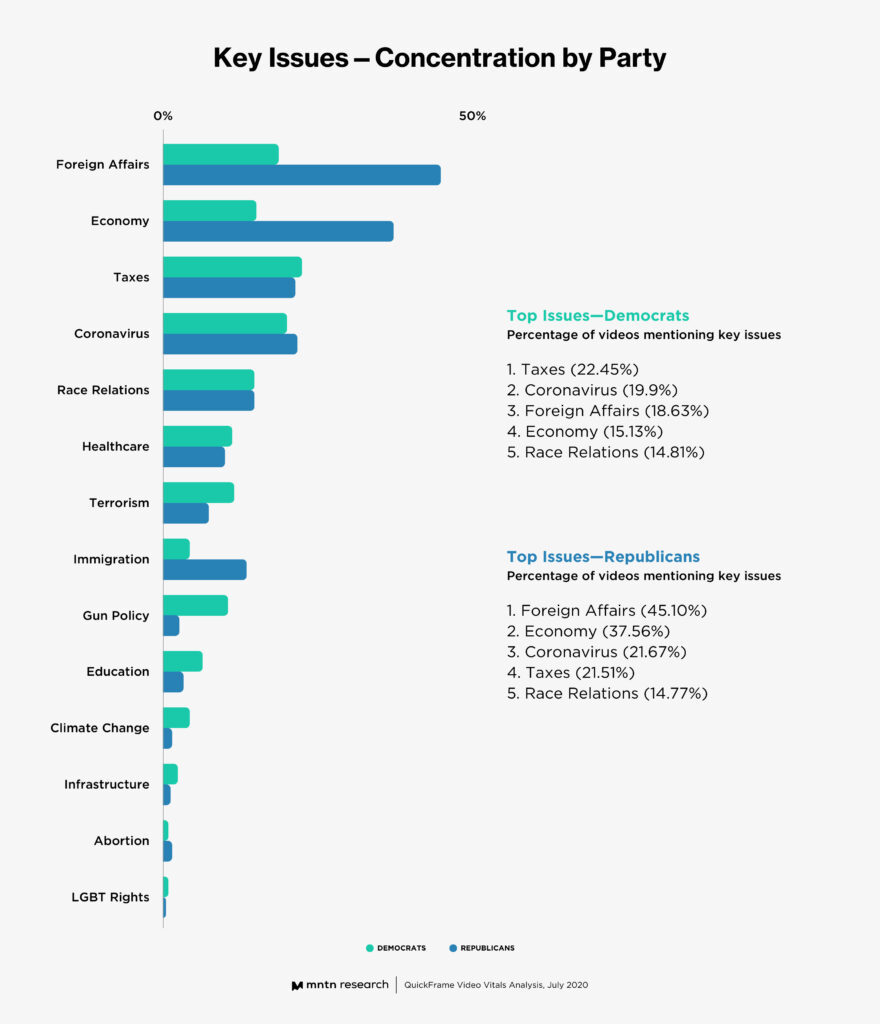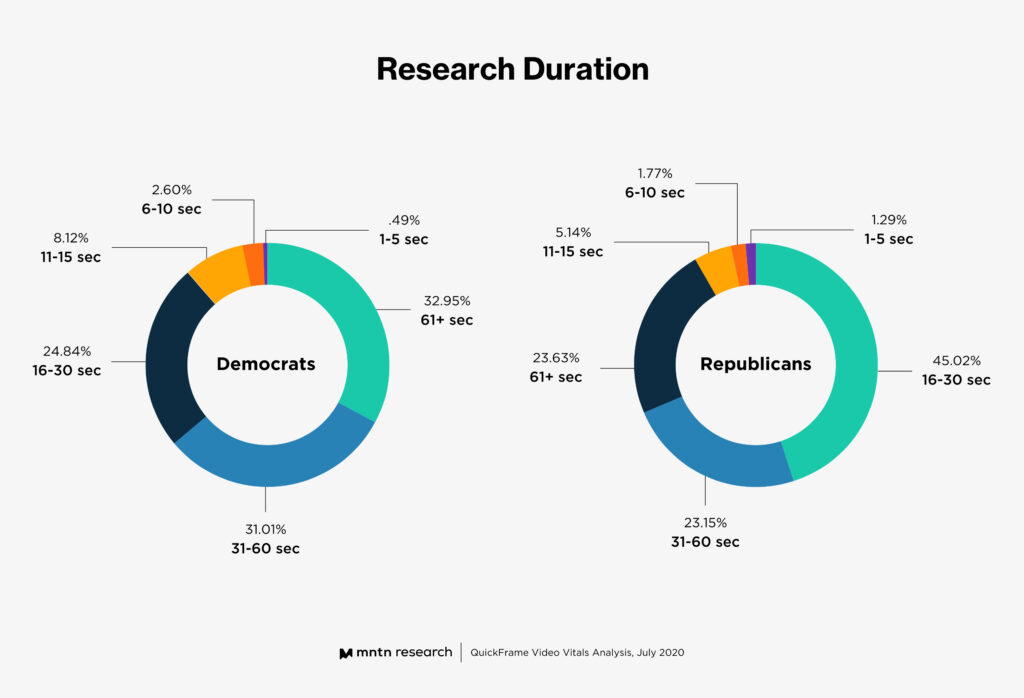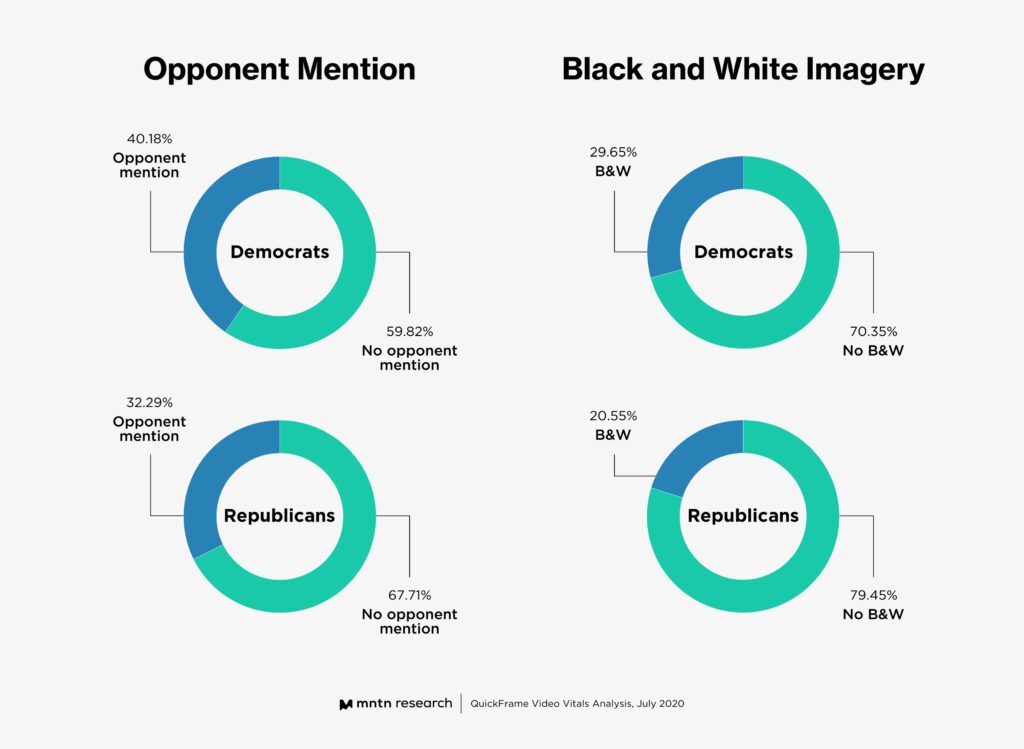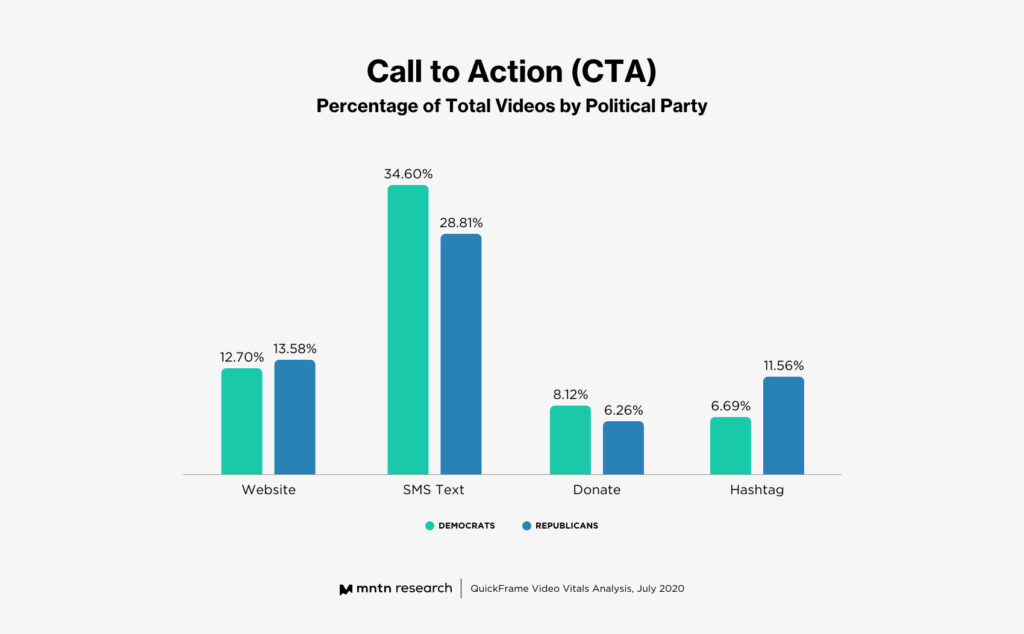Research Digest
What the 2020 Election Ad Landscape Can Teach Us About Brand Marketing
by Jacob Trussell7 min read
Abstract
- Political ads can be a framework to explore brand messaging strategies
- Visually conveying tone of voice and emotion can help drive a message home
- Identifying broad pain points can influence a wider audience
- Understanding your target audience will help select the most nuanced CTA
Political Ads, Brand Marketing, and You
It’s election season, which means political ads are heating up. According to AdImpact, spending is on track to reach $9.7 billion this election cycle, representing a 144% growth from 2018’s elections, and $660 million more than the elections of 2020. Linear broadcast television still reigns supreme, representing 51% of all political ad spend, followed by cable (15.9%), CTV (14.9%) and digital (14.9%).
Despite this massive disparity between linear TV and CTV, the odds are still in Connected Television’s favor. According to Basis Technologies, political advertisers increased their spending on CTV devices by 1500% in the first half of 2022 compared with the same period in 2020. As eMarketer states, “The percentage of spending flowing to CTV this fall is expected to increase even further as target audiences broaden as the general election approaches and budgets grow.”
Despite the overwhelming historical importance of political ads, we often view this subset of the industry in an ecosystem all of its own. Political ads are vastly different from routine brand or product videos, but there are steadfast insights you can surface from reviewing what drives the best performance in political ads that you can carry into your own brand messaging throughout the year.
Let’s dive into an analysis of political ads, and how you can sew those learnings into your future campaigns.
The Political Ad Landscape of 2020
In 2020, QuickFrame by MNTN conducted a study utilizing Video Vitals, a proprietary A.I. technology that can identify discrete attributes within videos and uncover which elements are tied to performance. This allows brands to understand the hyper-specific variables that are leading to the greatest impact on their specific campaign objectives, like engagement rates.
This specific analysis included data from 1,200+ campaign-sponsored political ads in the 2020 U.S. Presidential race and U.S. Senate races in Alabama, Arizona, Colorado, Maine, and North Carolina. The report focused on 120 key attributes, including (but not limited to)
- Mention of Opponent
- VO Identity
- Presence of Candidate
- Duration
- Key Issue: COVID-19
- Key Issue: Education
- Key Issue: Gun Policy
- Key Issue: Climate Change
Messaging
QuickFrame’s analysis found that candidates were united in their focus on several key issues, from foreign affairs and taxes to race relations and the coronavirus. Democrats and Republicans prioritized these issues in different ways, but they were still the core talking points every candidate was focused on. But Republicans messaging were more centralized on a handful of issues, where democrats spread their attention more broadly, assigning higher importance than republicans on most issues in the national conversation.

As we know the results of this 2020 election, where Democrats saw victories in the Presidential, Senate, and House races, the greatest takeaway for brands is to needle into the key pain points your target audience experiences, and through authentic, personalized messaging, address those pains directly. While you can zero-in on key pain points, your brand advertising campaigns will more likely benefit from broadly targeting a greater swath of your audience, rather than a specific subset.
Creative Style
QuickFrame analyzed the 2020 campaign ads for nearly 100 creative attributes and found interesting differences for the following variables:
- Duration
- Mention of an Opponent
- Use of Black & White Imagery

In terms of duration, Democrat candidates produced ads that were 30-seconds or longer, while Republicans produced ads in the range of 15- to 30-seconds. As marketers, you have a clear understanding of your ideal customer, their likes, and their needs. You can then use that audience data to inform the appropriate length for your ads. For instance, if you know your audience skew younger, you may find short-form content to resonate louder with this demographic.
The most notable insight into creative styles is how, when an opponent of a candidate is mentioned in an ad, it typically is accompanied by black and white imagery. This has been a tactic you’ve likely seen many times in political ads across the spectrum, from local elections to the national stage. The usage of black and white helps visually convey the message’s negative tone.

Your brand doesn’t have a political opponent, but it certainly has industry rivals you are competing against. The takeaway here is that you should find ways to visually convey the emotions you are attempting to engage in the viewer. That could be by using stark muted colors, like in political ads, but we dare you to think outside of the monochromatic box. Are there ways to creatively lampoon your competition by co-opting their brand colors, or using their own slogans or logos against them? The creative approach you take for a product video may be more tame than your average political attack ad, but the action you are attempting to instigate is the same. You want to be seen in the best light, while casting your competition in the worst.
Call to Actions
The call-to-actions that are used in political ads are wildly different from the CTAs you expect to find in a product or branded ad. For instance, Democrats used CTAs that asked potential voters to send SMS messages 6% more than their Republican counterparts. While SMS messaging can be a useful CTA for specific industries, like restaurants who want to offer regular discount codes, for brand and product advertisements, a URL to your website will be more beneficial.

But, coincidentally, driving potential voters to their campaign websites was not a high priority for 2020 political ads. Both Democrats and Republicans mentioned their campaign websites at low rates with a little more than a tenth of the analyzed videos mentioning a website either via on-screen graphics or spoken words.
But again, the insight to pluck out here goes back to a previous point. You know your audience better than anyone, and you know what will resonate with them. If not, create a test-and-learn campaign strategy where you can experiment with different CTAs–from SMS to websites or even some form of social engagement. In 2020, Republicans were more likely than Democrats to encourage social activity by utilizing hashtags. More than a tenth of Republican candidate videos display a hashtag at some point. The right understood they had a strong following on social media, and they used that to their advantage by using hashtag CTAs that compelled their supporters to be active online.
Using hashtags isn’t exclusive to ads that run on social media platforms either. They are incredibly useful in Connected TV ad campaigns. By delivering the viewer a hashtag on the biggest screen in their home, they will then feel compelled to take action on a second screen, whether it’s their mobile phones or a desktop computer. This gives brands even more touch points into the buyer’s journey, coaxing them along the path to purchase.
A Salient Point: What You Can Learn from the Spread of Misinformation in Political Ads
One of the largest issues the world faces today is the dissemination of misinformation across the internet, and that’s never been more prevalent in political ads. Big tech companies have attempted to put a stop to the spread of these falsehoods, to mixed results.
The lesson to take away from this is that your brand messaging must remain truthful and authentic to establish a sense of trust between yourself and your target audience. Use clear, concise language to effortlessly express your perspective, or what you want your audience to take away from your ad, leaving little room for any form of misinterpretation or misrepresentation.
Conclusion
Political ads may feel like they are in a world of their own–and you’d be right, they are.
But that doesn’t mean there aren’t highly valuable pieces of insights you can glean from the highest performing ads across the political spectrum. Just like your product videos or brand awareness video campaigns, political ads are about directly engaging the viewer, and asking them to take an action. In politics, that action will impact not only their lives, but the lives of others.
Luckily, you only need to worry about conveying how your product directly impacts your ideal consumer.
Subscribe to the MNTN Research Weekly
Sign up to receive a weekly feed of curated research, sent straight to your inbox.